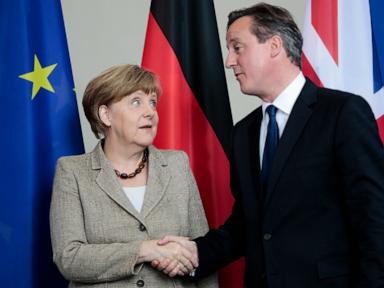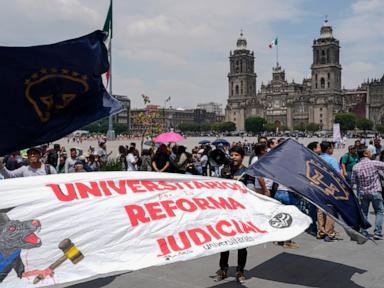ARTICLE AD BOX
The United States goes to polls on November 5, and Vice-President Kamala Harris stands as one of the contenders for the top post. If Harris becomes the President, she will be only the 16th Vice-President -- of the 50 the US has had so far -- to ascend to the presidency since 1789.
Here's a look at US vice presidents who ascended to the presidency:
John Adams (1797-1801)
John Adams, a prominent political philosopher, was the second President of the United States, following his role as the first Vice President under George Washington. When Adams secured the presidency, Democratic-Republican Thomas Jefferson finished second, resulting in a president and vice president from opposing parties.
Thomas Jefferson (1801 to 1809)
Thomas Jefferson, a champion of democracy and an American Founding Father, was the principal author of the Declaration of Independence (1776) and served as the third President of the United States. When Jefferson took office as President, he reduced Army and Navy spending, streamlined the budget, and abolished the unpopular whiskey tax that troubled the West.
Martin Van Buren (1837-1841)
Martin Van Buren was the eighth President of the US. A New York politician, he was appointed Secretary of State by Andrew Jackson. Skilled in managing the internal conflicts of the Jackson administration, Van Buren served as vice president during Jackson's second term from 1833 to 1837. He ran for president as a Democrat in 1836 and triumphed over three Whig candidates.
John Tyler (1841-1845)
John Tyler ascended to the presidency as the 10th President of the United States after the death of President William Henry Harrison in April 1841, just 32 days into his term. Often referred to as “His Accidency” by critics, Tyler was the first Vice President to assume the presidency after the death of his predecessor.
Millard Fillmore (1850-1853)
Millard Fillmore, the 13th President of the United States and a member of the Whig Party, holds the distinction of being the last President not aligned with either the Democratic or Republican parties.
Andrew Johnson (1865-1869)
Andrew Johnson supported slavery and states' rights but opposed Southern secession in 1861. Selected as Abraham Lincoln's running mate in 1864 for the “Union” party, he became the 17th President of the US after Lincoln's assassination in 1865.
Chester A. Arthur (1881-1885)
Chester A. Arthur, a Vermont native with limited political experience, was appointed collector of tariffs in New York, where he engaged in corrupt practices to fund the Republican Party. He joined the 1880 Republican ticket as James Garfield's running mate and became the 21st President of the United States, assuming office after the assassination of President James Garfield.
Theodore Roosevelt (1901-1909)
Following the assassination of President William McKinley, Theodore Roosevelt, at just under 43 years old, ascended to the presidency as the 26th and youngest leader in American history. He infused the office with renewed energy and authority, passionately guiding Congress and the American public toward progressive reforms and a strong foreign policy.
Calvin Coolidge (1923-1929)
Calvin Coolidge served as lieutenant governor and governor of Massachusetts before becoming Warren Harding's running mate in 1920. He assumed the presidency in 1923 after Harding's death. Coolidge was re-elected in 1924 with the slogan ‘Keep Cool with Coolidge.'
Harry S. Truman (1945-1953)
Selected as Franklin D. Roosevelt's running mate in 1944, Harry Truman became the 33rd President of the US after Roosevelt's death. Truman made some historic decisions, including authorising the atomic bombings of Japan.
Lyndon B. Johnson (1963-1969)
Lyndon B. Johnson was selected as John F. Kennedy's Vice President during the 1960 election campaign. After Kennedy was assassinated on November 22, 1963, Johnson took the oath of office as the 36th President of the US.
Richard M. Nixon (1969-1974)
Richard Nixon, who served as both a US Representative and a Senator from California, was elected as the 37th President of the US. He is known for bringing an end to American military involvement in Vietnam and improving diplomatic relations with the USSR and China.
Gerald R. Ford (1974-1977)
Gerald Ford, a seasoned legislator from Michigan, became Richard Nixon's Vice President after Spiro Agnew resigned in 1973 due to corruption allegations. In August 1974, Ford ascended to the presidency when Nixon resigned to avoid impeachment.
George H.W. Bush (1989-1993)
George H.W. Bush, the 41st President of the US, served two terms as Ronald Reagan's vice president. He won the 1988 presidential election against Democratic candidate Mike Dukakis. Bush played a key role in ending the Cold War and led an international coalition to expel Iraqi forces from Kuwait after their invasion.
Joe Biden (2020-present)
Joe Biden ran for president twice before being chosen as Barack Obama's running mate in 2008. He opted not to run in 2016, partly due to the cancer-related death of his son, Beau. Ultimately, Biden secured the presidency in 2020.
.png)
 3 weeks ago
1
3 weeks ago
1








 English (US)
English (US)